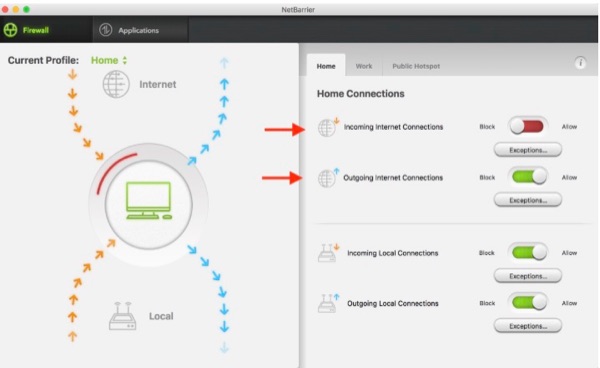Technical journalists don’t have access to Apple’s roadmaps, but they do have a pretty good idea of what might help us all with Apple’s new hardware and software. Hence: wishlists.

Wishlists are fascinating. Sometimes the author is guilty of being self-serving. Or perhaps the author isn’t deep enough in a specific area to make recommendations. However, in my experience, today’s best and notable tech journalists have some very good ideas about what their readers need. After all, readers (and podcast listeners) tell the authors as well as, or maybe more than, telling Apple. Maybe it’s because the journalists readily engage their readers.
In any case, I find it helpful to look at what smart writers think needs to be improved, even if Apple engineers have constraints, other roadmap driven ideas, or even agenda driven notions. So. Here we go.
Some Nice Wishlists
- MacRumors: “iOS 12 Wishlist: Features MacRumors Readers Hope to See in the Next Version of iOS.“
- MacRumors: “tvOS 12 Wishlist: Features MacRumors Readers Want to See Added to the Apple TV in 2018.“
- Macworld: “macOS 10.14: Improvements that Apple’s Mac operating system could use.“
- MacRumors: “macOS 10.14 Wishlist: Features MacRumors Readers Hope to See in the Next Version of macOS.“
- AppleInsider: “Wish list: Nine features we want to see in an iMac refresh at WWDC 2018.“
- PC Magazine: “MacBook 2018: Our Wish List.“
Those are the major ones I found, and that’s a lot of material to digest. So I won’t go any farther.
Opacity
If you’re going to pick just a few to ponder, my take is that the tvOS list (#2) offers the most substantive list of changes. That’s perhaps because Apple seems to be a little bit detached from an industry that’s changing fast. It’s also because, I think, Apple is reluctant to overwhelm the average TV viewer with gizmos. But, hey, make them available in advanced settings and keep the UI generally simple and the same. It can be done.
Another area that needs work is a graphical display of our network status, macOS and iOS, much like what Intego’s NetBarrier does. In this day and age, security and transparency have to trump mindless simplicity and a happy-go-lucky mindset.

Recently, I wasted a lot of time with a family support issue (macOS) because it wasn’t immediately clear was the state of the Mac’s firewall was. A graphical diagnostic tool would have helped a lot. It would also help highly mobile users, who often work while in public networks, understand in a very visible way, the network protection they have (or do not have). Apple has a unique genius to make this happen. It’s probably more of an issue for macOS than iOS.
Another thing I’d like to see is better documentation and system support for APFS. That means APFS support for Apple’s Fusion drives as well as Time Machine support for APFS formatted drives. After macOS 10.14, there should never be any reason to use HFS+ anymore.
Finally, based on what readers are telling me, it’s high time Apple gave us a new Mac mini. I recently went into some detail on this.
[The Argument for Apple to Ship a New Mac mini is Even Stronger Now]
WWDC is always full of terrific and unexpected delights. Having some perpective about what we need, or think we need, helps us put the keynote into better perspective. The lens of our wishlists helps us understand Apple and its immediate priorities. Often, we then appreciate what Apple is up to even as we put aside a few of our own fantasies.
Until next year.
[Note: Particle Debris is just one page this week.]
Particle Debris is a generally a mix of John Martellaro’s observations and opinions about a standout event or article of the week (preamble on page one) followed on page two by a discussion of articles that didn’t make the TMO headlines, the technical news debris. The column is published most every Friday except for holiday weeks.

John:
These are an interesting collection of readings. Particularly, your citing articles that permit a separate treatment of each OS and their supported devices enables greater understanding of issues pertaining to each system, without which this could be a study in confusion and conflation.
Many of the ideas proffered on these wish lists did, as I’m sure was intended, make me ask how I might use these OSes and apps differently than I currently do, and how these might improve my own workflow and productivity (and recreation), however many if not most of these addressed features for which I have never wished and doubt that I would ever use.
This led to a recognition of something not addressed in any of the articles, namely the complexity of the interplay between Apple’s OS ecosystem and their client base, and therefore the challenges of change. To be sure, any OS can always be improved in some respect; the question is one of cost and benefit for any single change, whether or not there is an imperative for that change, and whether or not there are unknown costs elsewhere in the ecosystem that may not be intended or even suspected.
We know two things from the Second Law of Thermodynamics, recognised as a universal truth, that change is inevitable (expressed as the inevitable increase in entropy) and that nothing is without cost. When a system is simple, basic choices for improvement may also be simple. For a single, immotile cell, motility provides an advantage if it is to remain solitary. Another change may be to combine with other like cells to become a colony (like slime mould) or even even a multi-cellular organism. For complex systems, choices for change are not simple, and can have unintended consequences, such as irreversible commitment to an evolutionary dead end, such as overspecialisation in order to focus on specific interests, such as food source, or for a tech company, a specific market. There are other hidden costs, such as security. Take for example, the calls for expanding iMessage to Android. Would the Android platform be capable of hardware level end to end encryption? Would that be true across the greater fragmented platform not simply of Android, the OS, but the hardware? Could there be nationstate sponsored spyware nested into the OS or device that could exploit a vulnerability to penetrate iMessage, and could that be leveraged to penetrate the entire iMessage user base, including Appleware? If the answer to any one of these is yes, then the potential costs clearly outweigh the benefits to privacy of end to end encryption. Take the issue of Safari and web browsing on tvOS. Would Safari, as currently configured, be sufficiently secure so as not to permit malware, spyware, Trojans and the like by someone visiting the wrong sites on their third party television, and what would that mean for the security of one’s account, not only when using tvOS, but across all Apple devices?
Apart from the issue of cost benefit for any change is the issue of imperative. For any complex and evolved system that competes favourably within its environment, most change is driven by imperative. If its prey gets faster, it has to either get faster (cheetahs), improve its stamina for an endurance chase (canines), or adopt a different hunting approach (ambush), or lose out to more capable competitors. Many of the items on the wish lists appear fairly innocuous (dark mode for iOS), whatever the costs to battery life might be, whereas others might appear simple, (split screen mode and multi-tasking on iOS for iPhone) but might pose an engineering challenge with unintended effects on hardware or OS performance (impact on aspect ratios to make a split screen work, impact on iPhone battery life or lifespan for multi-tasking), and therefore user experience and satisfaction.
Finally, comes the question of market. The one metric that we the community lack when putting together our wish lists are the actual data Apple collect on how the community actually use or attempt to use the product, never mind the data on performance and use for features that might appear on a competitor’s product (desktop mode for Android). What fraction of the community desire a specific feature, and is the cost justified in trying to bring it, or at least bring it now?
At the end of day, I am impressed with a recognition that many of these choices must be complex and require not only substantial R&D for feasibility and efficacy, but quality assurance for user experience, as well as monitoring and evaluation (a necessary time sink) for unintended effects, also known as ‘side effects’, which one can also argue, are predicted the Second Law as inevitable outcomes of entropy.
Happy Memorial Day.